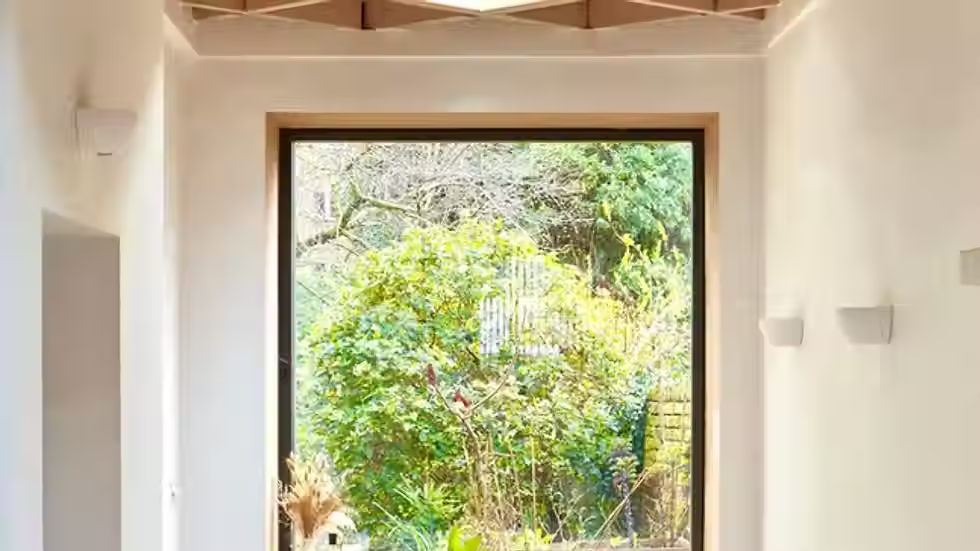How to Make a Small Space Feel Bigger
- Jennifer Copley
- Apr 16
- 3 min read
Updated: Apr 30
At OVS, we believe that good design has the power to add value and enhance wellbeing. Our practice revolves around a passion for creative solutions in space management. We aim to resolve tricky design problems without aesthetic compromise. A common challenge many of our clients face is limited space. Whether you're looking to create additional room in your home or make a compact area feel larger, we've got you covered.
Do you have an inner-city property with a small footprint? Perhaps you have a cozy corner in your home that feels cramped and underused? Here are some simple space-saving hacks and top design tips to help you maximize your small space.
How to Make a Small Space Feel Bigger: 7 Simple Steps
Neutral Colours

Colour has a significant impact on how we feel in a space. Dark colours can create intimacy, highlighting cozy nooks and architectural features. However, neutral colours amplify volume and reflect natural light. Soft whites, creams, light grays, and pastel shades reflect the most light, making a space feel open and airy.
We love to sprinkle in moments of colour in compact spaces, especially through artwork and soft furnishings, while still maintaining an overall minimal colour palette. This ensures an expansive feel throughout your home.
Maximise Light

If you know OVS, you know we adore natural light. Light is key to making a room feel spacious. It’s easy to underestimate the impact of heavy, overly detailed window treatments. Try removing patterned curtains and dark blinds. You’ll be surprised at how this boosts your space.
Opt for light curtains that hang from the ceiling to the floor. This creates a sense of verticality and openness. Do your best to remove anything that may obstruct outdoor views. Make a feature of your windows. If natural light is limited, use layered lighting to illuminate your space—think task lighting, recessed lighting, and pendant lights.
Use Mirrors

Why are mirrors so crucial in small spaces? They reflect and amplify light. When displayed cleverly across from windows or a view, they create the illusion of depth. If you lack wall space, consider leaning mirrors on top of drawers or directly on the floor.
Combining plants and mirrors can create exquisite depth and texture in a small area. This simple strategy significantly enhances the atmosphere of confined spaces.
Don’t Forget Floors
How can flooring make a space feel larger? Using the same flooring throughout creates visual harmony, making a room appear cohesive and more spacious. Disparate types of flooring can interrupt the flow between spaces.
Rugs are an excellent way to soften, define, and accessorize your area. However, be cautious with small rugs, as they can make a space feel even more cramped. When it comes to rugs, bigger is indeed better.
To maximize your rug's impact, ensure it at least touches the front legs of all furniture. This will help anchor the space. Additionally, keep 6 to 8 inches between the rug and the walls to avoid a heavy, cluttered look.
Statement Multifunctional Furniture

Less is more! Avoid filling your home with numerous small-scale furniture pieces. Instead, opt for a limited number of multifunctional statement pieces. When possible, choose multifunctional furniture, such as a bed with built-in storage or a room divider that doubles as a display unit.
Always consider the function of a room and the flow of traffic. You need to ensure easy access to storage and movement around your furniture.
Consider Your Layout

Zoning a room can create the illusion of more space while maximizing functionality. Arrange rugs, lighting, and furniture to define separate zones for activities like resting, working, and entertaining.
Consider vertical space as well. Even if your floor area is limited, you may have high ceilings. Optimize this by installing lighting, storage solutions, or artwork that draws the eye upward. Floating bookshelves and hanging plants save floor space while accentuating height.
Declutter

A decluttered, organized space instantly feels larger. But how do you tackle the everyday chaos? Storage baskets, bins, hidden compartments, and built-in cabinetry are essential.
Need help maximizing your space? Looking for creative interior design solutions that add value to your home? Whether you need assistance with finding room within your existing footprint or considering an extension, don’t hesitate to get in touch with OVS today.
With these tips, you can transform your small space into a stylish and functional haven. Embrace the power of good design!









Comments